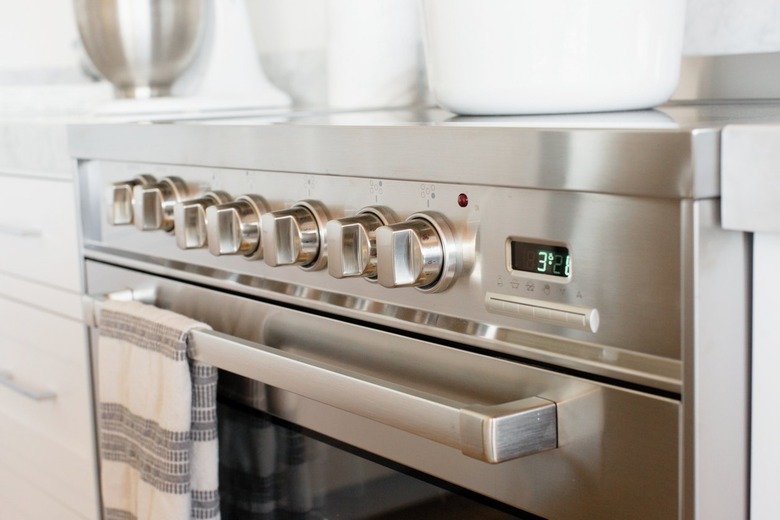How To Make Steel Shiny
We may receive a commission on purchases made from links.
When it's shiny, steel is a timeless accent. When it's tarnished, darkened, grimy, or just day-to-day dirty, steel's star appeal fades fast. Like anything else, keeping steel looking its best is often a matter of using the right products to maintain or restore its pizzazz.
Clean As You Go
Clean As You Go
New brushed steel or classic shiny steel are both easy to keep in good shape if you clean up when messes occur. Cleaning steel is often as simple as wetting a microfiber cloth, wiping it clean, and then drying it with a clean microfiber cloth to remove streaks or drops. If you allow messes to dry, more grunt work may be required.
Periodically, things may need deeper cleaning, in which case you could need a metal polishing paste or other steel cleaning products. Be careful of industrial choices if it's a steel surface used in food production or food preparation. For appliances and plumbing fixtures, industrial stainless steel cleaner can sometimes give super-tarnished metal a like-new gleam.
Most of the time, though, the deep-cleaning power team to get steel gleaming is simply vinegar and olive oil.
Things Needed
-
Microfiber and/or other lint-free cloths
-
Olive oil (recommended), baby oil, or vegetable oil
-
Stainless steel cleaner (optional)
How to Clean Steel
How to Clean Steel
Whether you have brushed steel or shiny steel, the cleaning process is the same, and ditto with the process in using eco-friendly or serious industrial stainless steel cleaners. There are lots of stainless steel cleaners out there, so find one that seems ideal for you. Always be sure to spot-test in an inconspicuous location to ensure it won't damage the surface.
Damage is not a concern with the natural cleaning method most recommended by professional housekeepers.
1. Remove Dirt and Grime
Before you polish steel, clean it. Use household distilled white vinegar, which is mildly acidic and great at cleaning steel. Normally, a 50-50 dilution with water gets the job done, but more serious cleaning can call for undiluted white vinegar. Whether using it diluted or straight, apply it with a clean cloth and scrub the surface clean. Then dry it with another clean cloth. If you're using undiluted vinegar, good ventilation is suggested.
2. Apply Olive Oil
If you're just cleaning a kitchen sink, you may only need a few drops of olive oil on a cloth. If it's something larger, like kitchen appliances, then you'll need more. You'll never need much, though, as you only want to apply a very thin layer of olive oil to the surface of whatever you're cleaning. If there's too much oil, you'll have more work to remove it, so apply it sparingly to start and increase only if needed. While olive oil is most recommended, others swear by baby oil and vegetable oil, giving you other options in a pinch.
3. Buff, Buff, Buff
Now buff the surface to a shine. Be careful and use gentle pressure, as steel can dent easily. With small circles, slowly buff the whole surface with a lint-free cloth until it's smooth and shiny again. Once you think it's all buffed, do it again with a fresh clean cloth because you have to remove all the oil or it will harden into a sticky residue and dirty the surface again.
Need More Cleaning Power?
Need More Cleaning Power?
Should the trusted olive oil route fail you, it may be time to consider commercial cleaning solutions for your tarnish-removing needs. The longer stains sit on steel, the more work it may take to remove them, but you'll be surprised how effective some products can be.
